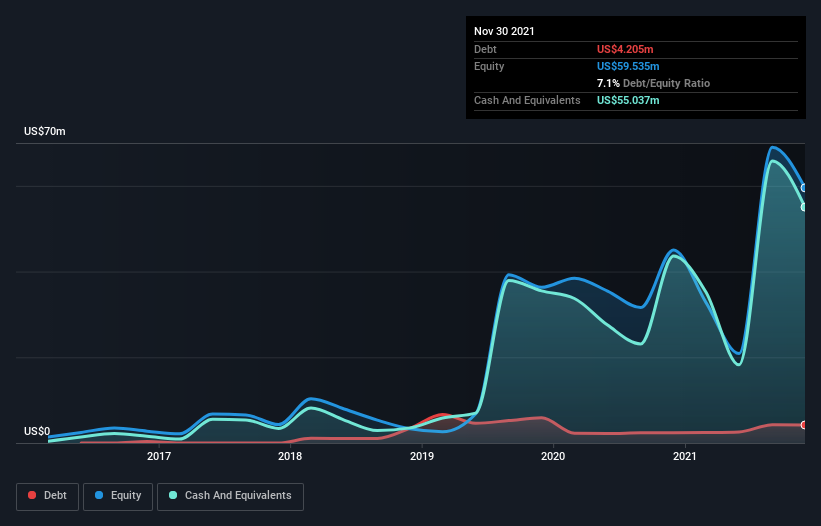Is Loop Industries (NASDAQ:LOOP) Weighed On By Its Debt Load?
Legendary fund manager Li Lu (who Charlie Munger backed) once said, 'The biggest investment risk is not the volatility of prices, but whether you will suffer a permanent loss of capital.' So it might be obvious that you need to consider debt, when you think about how risky any given stock is, because too much debt can sink a company. As with many other companies Loop Industries, Inc. (NASDAQ:LOOP) makes use of debt. But the real question is whether this debt is making the company risky.
What Risk Does Debt Bring?
Debt is a tool to help businesses grow, but if a business is incapable of paying off its lenders, then it exists at their mercy. In the worst case scenario, a company can go bankrupt if it cannot pay its creditors. However, a more usual (but still expensive) situation is where a company must dilute shareholders at a cheap share price simply to get debt under control. Having said that, the most common situation is where a company manages its debt reasonably well - and to its own advantage. When we examine debt levels, we first consider both cash and debt levels, together.
View our latest analysis for Loop Industries
What Is Loop Industries's Net Debt?
As you can see below, at the end of November 2021, Loop Industries had US$4.20m of debt, up from US$2.39m a year ago. Click the image for more detail. But on the other hand it also has US$55.0m in cash, leading to a US$50.8m net cash position.
How Strong Is Loop Industries' Balance Sheet?
According to the last reported balance sheet, Loop Industries had liabilities of US$6.31m due within 12 months, and liabilities of US$3.32m due beyond 12 months. Offsetting this, it had US$55.0m in cash and US$825.4k in receivables that were due within 12 months. So it actually has US$46.2m more liquid assets than total liabilities.
This short term liquidity is a sign that Loop Industries could probably pay off its debt with ease, as its balance sheet is far from stretched. Simply put, the fact that Loop Industries has more cash than debt is arguably a good indication that it can manage its debt safely. There's no doubt that we learn most about debt from the balance sheet. But it is future earnings, more than anything, that will determine Loop Industries's ability to maintain a healthy balance sheet going forward. So if you want to see what the professionals think, you might find this free report on analyst profit forecasts to be interesting.
It seems likely shareholders hope that Loop Industries can significantly advance the business plan before too long, because it doesn't have any significant revenue at the moment.
So How Risky Is Loop Industries?
By their very nature companies that are losing money are more risky than those with a long history of profitability. And in the last year Loop Industries had an earnings before interest and tax (EBIT) loss, truth be told. Indeed, in that time it burnt through US$47m of cash and made a loss of US$44m. But the saving grace is the US$50.8m on the balance sheet. That kitty means the company can keep spending for growth for at least two years, at current rates. Overall, its balance sheet doesn't seem overly risky, at the moment, but we're always cautious until we see the positive free cash flow. When analysing debt levels, the balance sheet is the obvious place to start. However, not all investment risk resides within the balance sheet - far from it. For example, we've discovered 5 warning signs for Loop Industries (2 are concerning!) that you should be aware of before investing here.
At the end of the day, it's often better to focus on companies that are free from net debt. You can access our special list of such companies (all with a track record of profit growth). It's free.
Have feedback on this article? Concerned about the content? Get in touch with us directly. Alternatively, email editorial-team (at) simplywallst.com.
This article by Simply Wall St is general in nature. We provide commentary based on historical data and analyst forecasts only using an unbiased methodology and our articles are not intended to be financial advice. It does not constitute a recommendation to buy or sell any stock, and does not take account of your objectives, or your financial situation. We aim to bring you long-term focused analysis driven by fundamental data. Note that our analysis may not factor in the latest price-sensitive company announcements or qualitative material. Simply Wall St has no position in any stocks mentioned.

